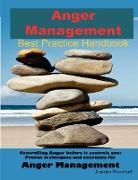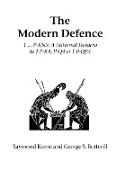- Start
- Anger Management Best Practice Handbook: Controlling Anger Before It Controls You, Proven Techniques and Exercises for Anger Management - Second Editi
Anger Management Best Practice Handbook: Controlling Anger Before It Controls You, Proven Techniques and Exercises for Anger Management - Second Editi
Angebote / Angebote:
Get Rid Of Anger Fast, Don't let anger control your life and Stop hurting the ones you love. A huge revision from the First Edition, which is a bestseller, with lots of extra chapters such as Anger Management for Teens, Domestic Violence, Self Assessment Test and much much more. This book covers all the Methods of Anger Management for a balanced approach to managing anger, which both controls the emotion and allows the emotion to express itself in a healthy way. Some descriptions of actions of anger management you'll learn to manage and control anger through activities within this book are: * Direct, such as not beating around the bush, making behaviour visible and conspicuous, using body language to indicate feelings clearly and honestly, anger directed at persons concerned. * Honorable, such as making it apparent that there is some clear moral basis for the anger, being prepared to argue your case, never using manipulation or emotional blackmail, never abusing another person's basic human rights, never unfairly hurting the weak or defenseless, taking responsibility for actions. * Focused, such as sticking to the issue of concern, not bringing up irrelevant material. * Persistent, such as repeating the expression of feeling in the argument over and over again, standing your ground, self defense. * Courageous, such as taking calculated risks, enduring short term discomfort for long term gain, risking displeasure of some people some of the time, taking the lead, not showing fear of other's anger, standing outside the crowd and owning up to differences, using self-protective skills. * Passionate, such as using full power of the body to show intensity of feeling, being excited and motivated, acting dynamically and energetically, initiating change, showing fervent caring, being fiercely protective, enthusing others. * Creative, such as thinking quickly, using more wit, spontaneously coming up with new ideas and new views on subjects. * Forgiving, such as demonstrating a willingness to hear other people's anger and grievances, showing an ability to wipe the slate clean once anger has been expressed. * Listening, to what is being said to you. Anger creates a hostility filter, and often all you can hear is negatively toned. A common skill this book and most anger management programs teach is learning assertive communication techniques. Assertive communication is the appropriate use of expressing feelings and needs without offending or taking away the rights of others. It is typically started with the use of "I" statements followed by a need statement. For example, "I feel upset when you don't take my feelings into consideration when you talk about your past relationships. I hope you can be more thoughtful and know what you should and should not say the next time." With regard to interpersonal anger for example, this book recommends that people try, in the heat of an angry moment, to see if they can understand where the alleged perpetrator is coming from. Empathy is very difficult when one is angry but it can make all the difference in the world. Taking the other person's point of view can be excruciating when in the throes of anger, but with practice it can become second nature. The main issue of anger management is that anger is regarded as an incorrect projection of the mind, so that insight can ultimately correct the mind and eliminate anger completely. This book helps you gain that insight - it's first edition is a bestseller, this second edition is even better, revised and extended.
Folgt in ca. 15 Arbeitstagen



